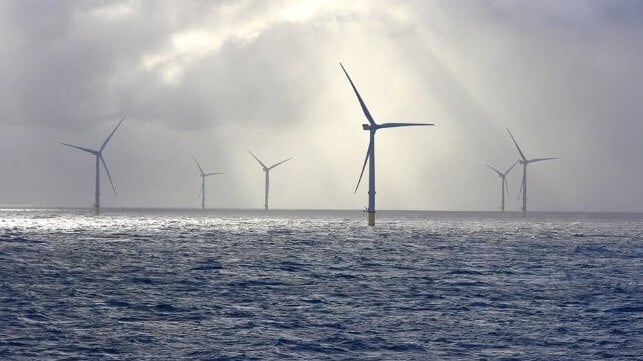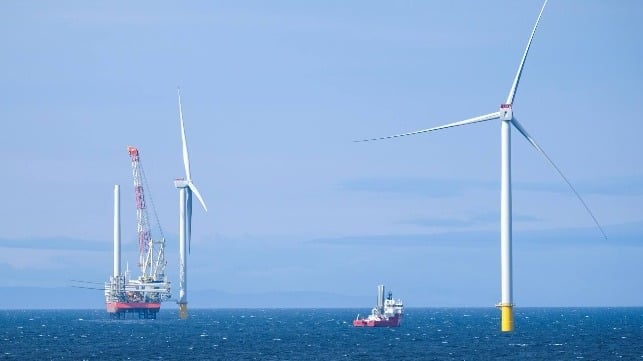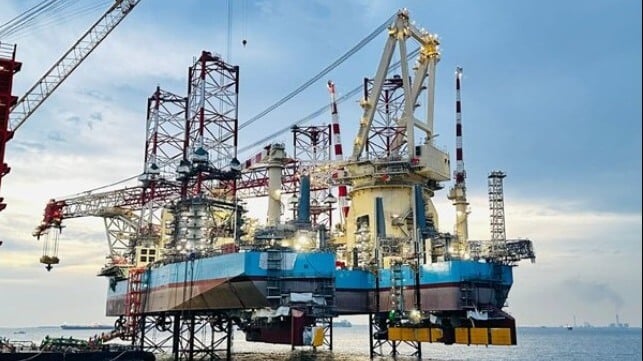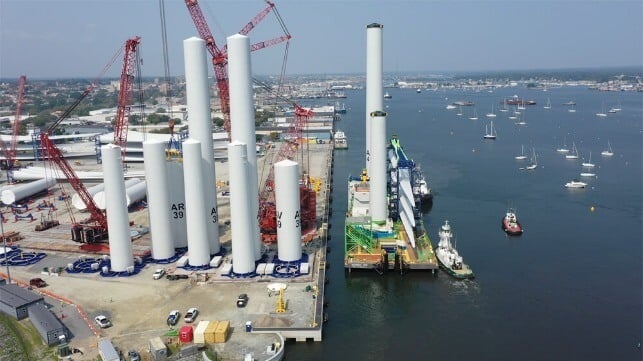‘Drill, Baby, Drill’: Europe Aims To Reduce Reliance on US LNG
- High energy prices are forcing Europe to reconsider its anti-hydrocarbon stance.
- Greece, Italy, and the UK are reopening offshore oil and gas exploration as domestic output becomes essential to curb reliance on costly LNG imports.
- This energy security pivot clashes with Europe’s long-term climate goals and trade promises.
Notions of renewable energy and reducing greenhouse gases are nice, but costly energy prices are forcing a shift in Europe’s priorities.
Reuters reported this week that two members of the European Union — Greece and Italy — and the UK are loosening their opposition to new oil and gas drilling, even as the continent builds out renewables to slash greenhouse gas emissions and meet climate targets.
Greece in November issued its first offshore oil and gas exploration license in more than 40 years to a trio of companies including Exxon Mobil. The Block 2 license in the Ionian Sea could hold up to 200 billion cubic meters of gas; drilling is expected to begin in late 2026 or 2027.
The country also awarded Chevron and Helleniq Energy exploration rights in the blocks south of the Peloponnese peninsula, Reuters said.
The Italian government too is considering reviving offshore oil and gas exploration, which it shelved in 2019.
And in Britain, the UK government last week loosened its ban on new exploration activity in the North Sea; companies will be allowed to expand production in existing fields. Reuters said the government is expected to give the green light to two major new fields in the coming months.
Meanwhile, a major discovery in Poland earlier this year has sparked interest in the country’s offshore prospects, while in Norway, state-owned Equinor plans to drill 250 exploration wells over the next decade.
EU member countries bucking the trend include Denmark, which banned all new exploration in 2020; and the Netherlands, which nixed new onshore fields in 2023 but still allows offshore exploration.
The change in tack caused by the 2022 energy shock when Russia invaded Ukraine means that natural gas will likely be part of Europe’s energy paradigm for decades.
Reuters said the European Union depends on gas imports for 85% of its consumption, according to Eurostat, compared with a peak domestic production of 50% of demand in the 1990s.
The top importing country is the United States by far. An October Reuters article said the United States will supply around 70% of Europe's LNG in 2026-2029, up from 58% so far this year, as the EU plans to ban Russian LNG from 2027 and Russian gas from 2028, Energy Aspects analysts said.
The US today accounts for 16.5% of the EU’s total gas consumption.
(It’s important to note that, despite Western sanctions on Russia, the EU still buys plenty of gas from there. In fact, it was the bloc’s second-largest importer of LNG in 2024. The EU has imposed several sanctions on Russian energy products since the war started, but not on natural gas delivered for direct use by member states (neither piped nor LNG), states Cipher News.
Europe’s dependency on US LNG is increasing due to lower storage and a decline in pipeline flows from Russia and Algeria. The continent will need to import up to 160 additional LNG cargoes this winter. LNG imports will jump from 820 tankers this year from 660 last year, representing 48% of all EU gas supply, Reuters said.
Developing domestic energy sources could reduce Europe’s reliance on gas imports and potentially lower the costs of foreign fuel. According to the Institute for Energy Economics and Financial Analysis (IEEFA), The EU paid about €225 billion for LNG imports in the last three years, including €100 billion for US LNG. This high amount is partly because US LNG is more expensive for EU buyers than LNG from any other supplier.
But for a couple of reasons, the energy security push is puzzling.
For one, it contradicts Europe’s long-term climate aspirations. The EU and Britain both aim to achieve carbon neutrality by 2050 by expanding renewables and phasing out fossil fuels.
The IEEFA argues that dependency on natural gas could lead the EU to miss its 2040 target of reducing net greenhouse gas emissions by 90% compared to 1990.
The IEEFA also notes that the weighted average cost of utility-scale solar PV projects in Europe has more than halved in the last decade. The organization adds that there have also been significant cost declines for onshore and offshore wind.
Second, it appears to contradict a promise the EU made earlier this year to buy more US LNG. The Trump administration and the bloc reached a trade deal whereby the EU commits to purchasing $250 billion in US energy products (mostly LNG) a year for the next three years, totaling $750 billion in 2028. In exchange, the US lowered tariffs on EU goods from 30% to 15% and secured an additional $600B in non-energy investments from the EU.
The IEEFA says the annual $250 billion is unrealistic and risks placing too much reliance on one supplier, i.e., the US:
To meet the commitment of buying US$250 billion (€215 billion) of energy products from the US per year, the EU would need to source about 70% of its energy imports from the country. The deal effectively ties the bloc's energy supply to a single seller.
Meanwhile, the United States is exporting LNG in record volumes.
The federal government is considering further steps to speed up the buildout of liquefied natural gas export infrastructure as flows of natural gas to LNG plants hit a record high.
The Federal Energy Regulatory Commission's chairwoman announced the coming changes in a statement that said, in part, “Energy infrastructure needs to be built now.”
The Energy Information Administration projects that if all currently planned LNG facilities get built, it would more than double the United States' liquefaction capacity.
The FERC’s news coincided with data suggesting the United States was on track to post another record month for LNG exports as Europe soaks in whatever volumes are available to stock up on gas ahead of winter.
Argentina Sees Greenlight for $20 Billion LNG Project in Mid-2026
Argentina’s state-run energy firm YPF expects to take together with its foreign partners the final investment decision for the $20-billion Argentina LNG project in the middle of 2026, YPF’s chief executive Horacio Marin told Reuters on Thursday.
YPF, Italy’s Eni, and XRG, the new energy investment company of Abu Dhabi’s national oil firm ADNOC, are developing the Argentina LNG (ARGLNG) project. Argentina LNG will be an integrated upstream and midstream gas development project designed to develop the resources of the huge shale basin Vaca Muerta field and serve international markets, exporting LNG in various phases, with first exports potentially by 2030.
Eni and YPF signed in October the Final Technical Project Description, which involves gas production, processing, transportation, and liquefaction for export through two floating gas liquefaction units (FLNG) with a capacity of 6 million tons per year each.
Last month, Eni and YPF signed a non-binding agreement with XRG for the potential involvement of ADNOC’s company in the 12 MTPA phase of the integrated project.
LNG exports from the 12 MTPA project phase involving Eni and XRG will likely start in 2030 or 2031, Marin said told Reuters today.
Early next year, YPF will retain JP Morgan to seek project financing for this phase, the executive said, adding that project financing usually covers 70% to 80% of similar large-scale projects.
Huge shale gas reserves are laying the foundations of pipeline and LNG exports out of Argentina, which could make South America’s second-largest economy a major force in regional and global gas supply.
Argentina has the resource base—the vast unconventional reserves in the Vaca Muerta shale basin in the Neuquen province. But it needs to build up infrastructure to ship the gas from supply centers to interstate regional pipelines and planned LNG export facilities.
Argentina could see its natural gas production peak at 180 million cubic feet per day (Mmcd) by 2040 under a base-case scenario, with the potential to reach as high as 270 Mmcd if the country successfully develops all its planned LNG export projects, Wood Mackenzie said in a July outlook on the country’s gas and power markets.
By Michael Kern for Oilprice.com






